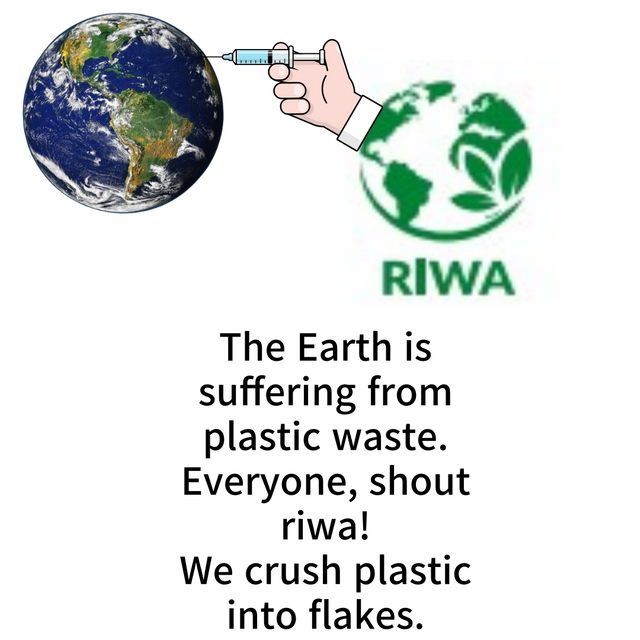
This is because plastic will never go away
Plastic is a material that is made to last forever. About 33 percent of all plastics, including water bottles, envelopes and straws, are thrown away after being used for single use. Plastic does not biodegrade. It just breaks down into smaller, smaller pieces.
» Abandoned plastic materials may remain in the environment for more than 2000 years. Source: Barry Digregorio, bio - based performance bioplastics: Mirrell, Chemical and Biological 2009.
- Plastic affects human health.
Toxic chemicals flow out of plastic, and they're found in almost everyone's blood and tissues. Exposure here is linked to cancer, birth defects, immune dysfunction, endocrine disruptions and other diseases.
» Bisphenol A ,a plastic-related chemical, and additive phthalates used in plastic synthesis are causing harm to the human body. Source: Risk of plastics: hazards to human health and the environment, Arizona State University's bio-design laboratory, March 18, 2010.
- Plastic pollutes groundwater.
There are thousands of landfills in the United States. Toxic chemicals are released from the plastic buried under each landfill, seeping into the groundwater and flowing downstream to lakes and rivers.
» There is a long-term risk of soil and groundwater contamination due to plastic byproducts and a few additives, which can be a residual organic pollutant. Sources: Jefferson Hopewell, Robert Deborak, Edward Koscior, plastic recycling: difficulties and opportunities, "biology" June 14, 2009.
- Plastic attracts other pollutants.
Chemicals such as internal combustion agents, bisphenols, phthalates, and other hazardous chemicals that give plastic hardness or flexibility are poison that blocks moisture and stick to petroleum-based objects such as plastic waste. That's why toxic chemicals emitted from plastics can be absorbed into other plastics. This is a very serious problem because the amount of plastic waste accumulated in the oceans around the world is increasing.
» Fish exposed to a mixture of chemical pollutants and polyethylene absorbed from the marine environment suffer from hepatotoxicity and pathology because they accumulate these chemical pollutants in vivo. Source: Chelsea Lockeman, plastic intake is delivering harmful chemicals to fish, causing liver stress, Science Report.
- Plastic threatens wild animals.
Wild animals can also get tangled in plastic, accidentally ingest food, or feed their young. Plastic is scattered in remote areas of the Earth. Our oceans also have 36 times more plastic waste than zooplankton.
» More than 260 species of invertebrates, turtles, fish, seabirds, and mammals have been reported to have ingested or entangled in plastic waste, resulting in impaired mobility, impaired feeding ability, reduced reproduction success rate, lacerations, ulcers, and death.Sources: Richard C. Thompson, Charles J. More, Spring Sal, S. Frederick, Shana H. Swan, Plastic and environmental and human health: current consensus and future trends, " life sciences" June 14, 2009.
- Plastic builds up in the environment.
Americans throw away more than 30 million tons of plastic a year. Only 8% of them are being recycled. The rest accumulate in landfills, burn up, or become trash.
» There are more than 5 trillion pieces of plastic floating in the ocean, weighing more than 250,000 tons. Sources: Marcus Erickson, Laurent C. M. Lebreton, Henry S. Carson, Martin Thiel, Charles J. More, Jose C. Borrero, Francois Galgani, Peter G. Ryan, Julia Lyser, plastic pollution in the world's oceans, Pros One December 10, 2014.
- Plastic is poisoning our food chain.
Even plankton, the smallest creature in the ocean, consume microplastics to absorb harmful chemicals. Small pieces of broken plastic are replacing the algae that feed large sea creatures.
» Contaminated plastic ingested by marine life provides a pathway for POP to enter the marine food web. Source: Antony L. Andradi, microplastics in the marine environment, marine pollution bulletin 2011.
- Reducing plastic waste costs billions of dollars.
Because of plastic pollution, tourism, recreation, business, human health, animals, birds and fish all suffer. The ongoing financial damage is immeasurable.
» The total natural capital of plastics used in the consumer goods sector every year is $75 billion. Source: U.N. Environmental Plan Damages $13 Billion In Marine Ecosystems From Plastic Waste
riwa always thinks about plastic